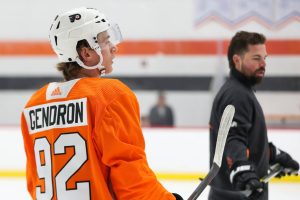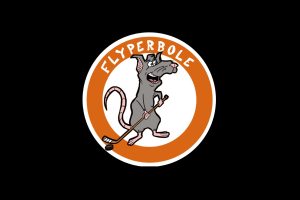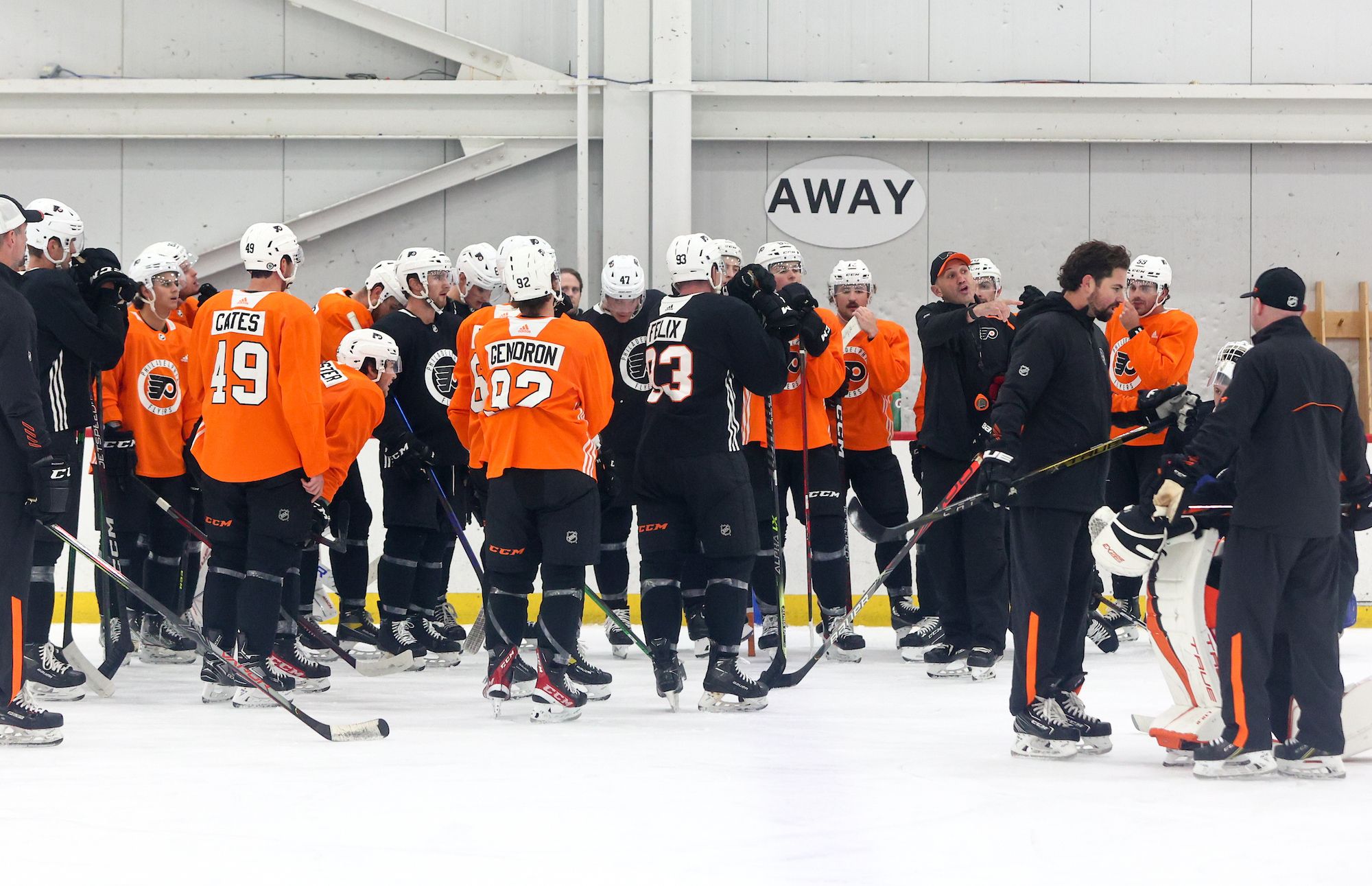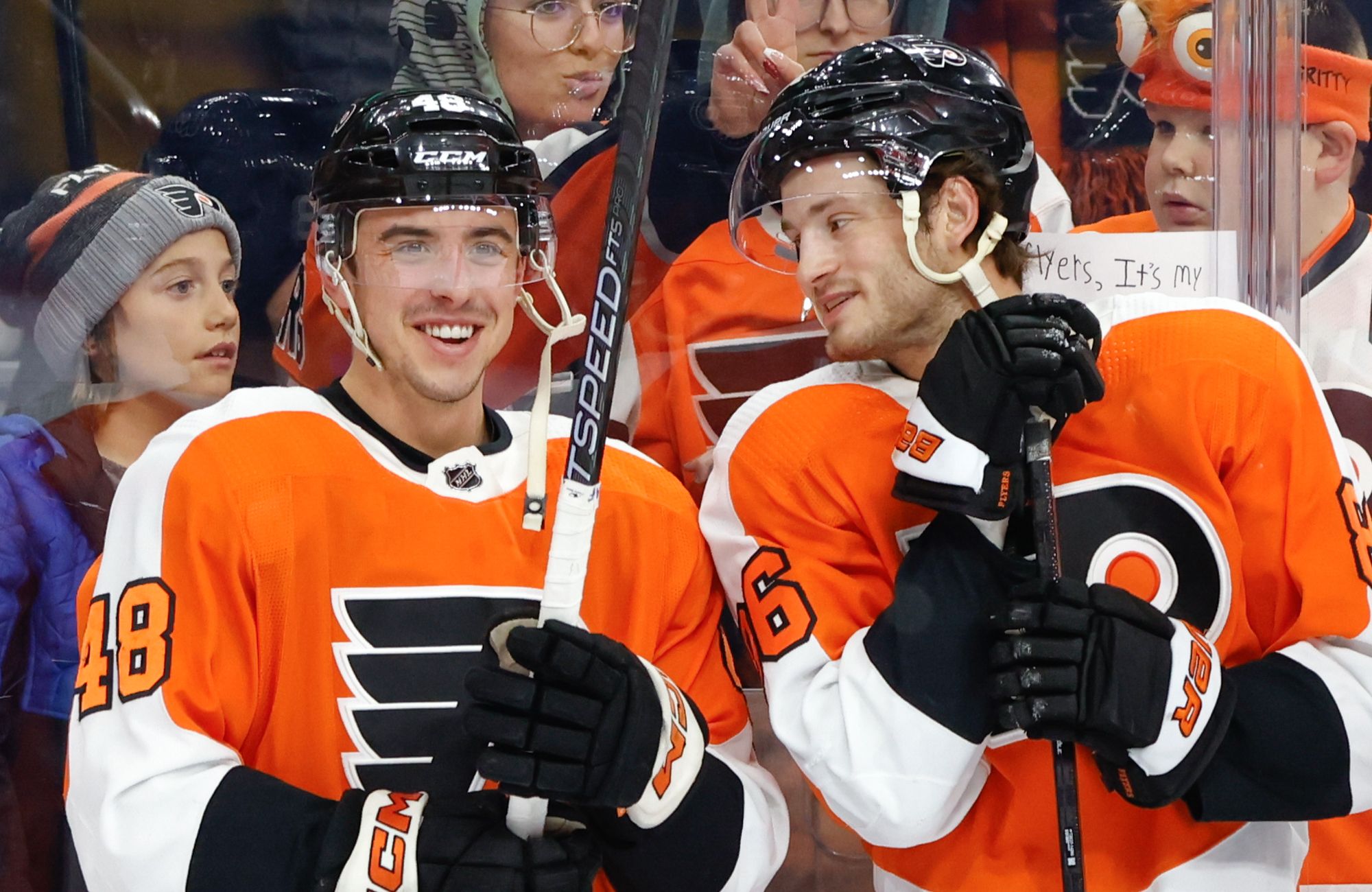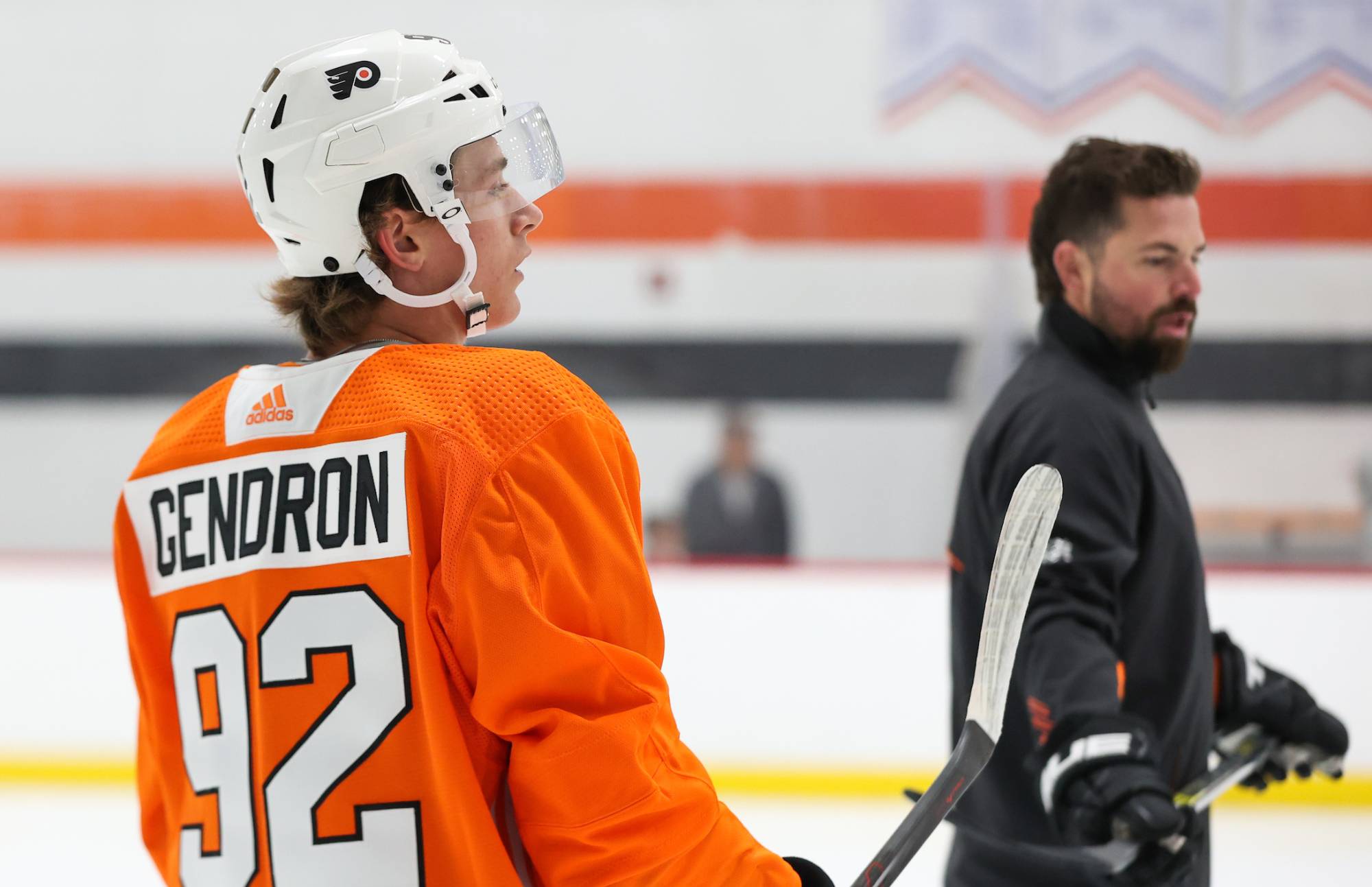Facing a one-goal deficit early in Wednesday night’s game against the Chicago Blackhawks, the Philadelphia Flyers took two penalties in succession and giftwrapped a 5-on-3 advantage to the fourth-ranked power play in the NHL. The contest appeared ready to spiral out of control, and the Flyers’ opportunity to take over the final wild card spot in the Eastern Conference was quickly sliding out of view.
Just a couple months ago, a Blackhawks goal would have been a near-certainty. The Philadelphia penalty kill ranked 25th in the NHL back in early January, and was bleeding high-quality chances and goals seemingly every night. But on Wednesday, that struggling PK was replaced by a confident, positionally-sound unit that allowed Chicago just two shots and no high-quality chances during the entirety of the two-man advantage.
This wasn’t simply a one-off performance by the Flyers’ shorthanded units. In March, Philadelphia has killed off 13 out of 14 power play opportunities by the opposition, jumping to an 80.1 percent season-long efficiency rate (22nd in the NHL). Smack in the middle of an unlikely playoff push, the Flyers’ penalty kill results have turned in the right direction at the ideal time.
And it’s not just goal prevention. Philadelphia’s penalty kill has done a much better job of suppressing shots and scoring chances since the start of February, driving the unit’s newfound success. And it’s the team’s shorthanded specialists in particular that have led the charge.
The turnaround started in February
Philadelphia’s gaudy 92.8 percent PK efficiency rate in March will grab the headlines, but the Flyers’ shorthanded units actually began to turn around starting in February. After three straight months of bleeding scoring chances, February proved to be the team’s best penalty killing month from an underlying metrics standpoint since way back in October. It laid the foundation for March’s success.
As the chart shows, Philadelphia’s penalty kill dealt with a host of problems at the start of the year. In October, shot suppression was fine, but the goaltending was unable to come through with big saves at key moments, spiking the team’s goals against totals. Then in November, opponents began to gash the Flyers in high-danger areas, as the scoring chance numbers rose despite an improvement in general shot suppression. Only strong goaltending by Michal Neuvirth kept them afloat. December is when things were at their worst — Philadelphia couldn’t prevent opposing power plays from taking shots, generating chances, or scoring goals. It was a nightmare.
The tide turned in February. Shot attempts dropped to a strong 46.4 per sixty minutes of shorthanded play, and the Flyers posted their best single-month scoring chance prevention performance. The shot prevention trends have continued into March, as the current 41.9 shots against per sixty would be a month-long season best. But the real eye-opening stat is that the Flyers have allowed only 2.8 high-danger scoring chances per sixty minutes of penalty kill time in March. In raw numbers, this amounts to only one chance permitted by the shorthanded units so far this month.
That’s astounding, and showcases Philadelphia’s newfound attention to detail in their defensive zone positioning and assignments. But which penalty killers have driven this recent dramatic improvement? The answer may surprise you.
Penalty kill specialists carrying the load
If you had to put together a list of the Philadelphia Flyers most often criticized by Broad Street Hockey this season, Chris VandeVelde, Pierre-Edouard Bellemare and Nick Schultz would all likely be near the top. After all, the elevation of the Bellemare line to third-line status was a drag on the team’s overall even strength shot attempt differentials, and Schultz remains near the bottom of the advanced stat chart when it comes to Philadelphia defensemen.
However, we’ve never questioned their solid play on the penalty kill. Over the past two months, that solid play has turned to positively fantastic.
Since February, the Flyers have primarily rolled with six-man forward and four-man defense rotations on the penalty kill. Bellemare, VandeVelde, Sean Couturier, Matt Read, Claude Giroux and Ryan White comprise the forwards, while Schultz, Radko Gudas, Andrew MacDonald and Mark Streit have carried the load on defense since Michael Del Zotto’s season ending injury.
When it comes to the performance of the forwards, it’s really the duo of Bellemare and VandeVelde, and then everyone else.
Over the past month and a half, Bellemare and VandeVelde have been beyond stingy when it comes to shot, scoring chance, and goal prevention. In fact, over a full season, these shot prevention metrics would put the Flyers’ top duo up with elite penalty killers like Carl Hagelin (1st in NHL in on-ice shots against per 60), Daniel Winnik (3rd) and Justin Abdelkader (6th). They’re performing at a truly elite level.
On the back end, it’s the oft-maligned Schultz and his regular partner Radko Gudas who stand out. Like Bellemare and VandeVelde, Schultz and Gudas have proven a truly effective penalty killing pair recently.
Players like VandeVelde, Bellemare and Schultz can be rightfully criticized at times for underwhelming play at even strength, but it’s important not to forget the value that they provide on the penalty kill. As the Flyers of December can attest, poor shorthanded play can truly bury a team. But since February, the play of those three and Radko Gudas has shored up a previously-weak penalty kill and helped the Flyers immensely in their run at the postseason.
Conclusion
No longer the Achilles heel of the Philadelphia Flyers, the team’s penalty kill has performed like a strength since the start of February. The Flyers aren’t just keeping the puck out of the net — they’re limiting shots on goal and stifling their opponents’ attempts to fight to the high-danger areas of the ice on the power play.
It’s been the most-used duos of Pierre-Edouard Bellemare and Chris VandeVelde up front, and Radko Gudas/Nick Schultz on the back end that have been primarily responsible for the Flyers’ uptick in penalty kill efficiency. Philadelphia’s shorthanded units are performing at a truly elite level when those four players are on the ice.
Gudas has delivered positive even strength puck possession statistics at even strength all season, but Schultz, Bellemare and VandeVelde have struggled in this regard through most of the year. But in recent weeks, all three have improved at 5-on-5, and that jump in play has been supplemented by fantastic penalty killing results.
There was a midseason outcry among members of the fanbase for the scratching of Nick Schultz, and some believe that Chris VandeVelde would be the best option to come out of the lineup (if the NHL has their way, he might take a seat regardless) for Jakub Voracek. But be sure to account for penalty killing prowess before making those calls. You can be sure that Dave Hakstol is doing so.



